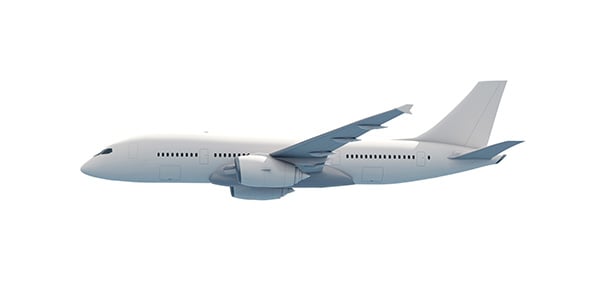For the transportation of explosives on base you would establish a?
How many days in advance do units forcast or project ancillary...
What should be your number one concern when instructing aircrew flight...
What is conducted in an enviornment as realistic as possible to...
How should the equipment used for aircrew flight equipment...
After completing the inspection used for the aircrew flight equipment...
Which aircrew continuation class is used for members prior to their...
What is your most important trait when it comes to training?
Air Force mishaps that results in total destruction or damage beyond...
Which class of mishape does not involve USAF operations, but results...
Into which subsystem would a survival radio be placed?
Prior to assigning individual work duties, you should first?
What is your first responsibility when receiving a new or updated...
When may consumables such as halocarbon be placed in composite tool...
Containers of oily rags, combustible scraps, and waste materials must...
Which major command (MAJCOM) is responsible for development and/or...
A timely mishap investigation relies on?
Serviceable and unserviceable explosive items must be?
Prior to using the career field education and tarining plan (CFETP),...
When is an aircrew flight equipment officer (AFEO) or senior...
What classification of mishaps results in injuries that only require...
In what case may operational aircrew flight equipment (AFE) assets be...
Status of Resources and Training System (SORTS) is designed to...
What agency develops the operational requirements document (ORD)?
Who must document compliance with and operational risk management...
When if ever are common harware items such as helmet studs, nuts, and...
Training waivers provide?
Weapons safety training is conducted by the?
Where is the office of primary responsibility (OPR) information on an...
What should be done as a minimum to a physiological mishap victim...
When will you receive additional training in Air Force Hazardous...
Weapons safety training is required?
The master inventory list (MIL) remains valid until?
What survey is designated to indicate the quality of Air Education and...
To perform a proper periodic inspection od an explosive operation, you...
When you decertify a newly assigned person on a task they are not...
What are the two types of safety borads that occur when dealing with...
When may an explosive laden vehicle be loaded and unloaded while the...
An Air Force specialty code (AFSC) awarding course is what type of...
Before granting an explosive facility license, the base explosive...
A limited quanity of which in-use aircrew flight equipment (AFE)...
What mishap classification is assigned if an employee is injured and...
If there is a disagreement on a specialty training standard (STS)item...
To be acceptable for the storage of explosives, a proposed facility...
The code 412A id defined as a?
Who should be the final reviewer of all DD Form 1144, Support...
Which aircrew continuation class is used for the non-ejection egress...
If there is no major command (MAJCOM) weapons safety training plan...
What is the primary form we use to record the quiality control (QC)...
Aircrew filght equipment (AFE) explosives must be carried in?
What is the major difference between a safety board and Legal...
Who will establish the specific requirements for establishing and...
Government vehicles that are used to transport explosives must be...
What three sources give supervisors a starting point for determining...
What provides an assessment of the vulnerability or lithality of a...
When developing an AF Form 797, you do not list?
If you have a urgent concern about technical school training, use the?
Who is responsible for the aircrew flight equipment (AFE) special...
When are mission need statments required?
The base fire Chief completes which entries on an AF Form 2047,...
How many part are there to the typical objective statement?
Which is not a fundamental principle that must be observed when...
For safety training to be effective, the trainee must?
The list of tasks on an AF Form 797 pertain only to?
Who is responsible for aircrew flight equipment initial and...
The four elements of the base disaster response force (DRF) are the...
Which column of the specialty training standard (STS) list all the...
An exception to the route of travel that explosives-laden vehicles...
Who is responsible to publish an emergency action plan (EAP) for use...
Prior to a utailization and training workshop (U&TW) what does the...
If you want to automate your enlisted specialty training (EST)...
Which standard is a comprehensive task list prepared by Air Force...
Responsiblity for determining the overall direction of training within...
What is conducted to determine the operational effectiveness and...
A primary focal point for all safety related matters is the?
Explosive limits are based on the ?
To be acceptable for storage, explosives must?
You can best evaluate the effectiveness of training received by...
Which of the following in not found in Part 2 of the career field...
Major Command (MAJCOM) and Air Education and Training Command (AETC)...
Which column of the specialty training standard (STS) defines the...
What form is used to change an Air Force publication except for...
The filed evalutaion questionnaire ask the supervisor to rate?
Information about career progression in a Air Force specialty can be...
What is conducted throughout a system's life cycle to ensure the...
Which technical order (TO) contains authorization compatibility...
An occupational survey report (OSR) is completed on each Air force...
The key to the entire explosives safety program is the?
The Air Force Occupational Measurement Squadron (AFOMS) provides two...
Responsibility for ensuring safety training is provided to applicable...
















